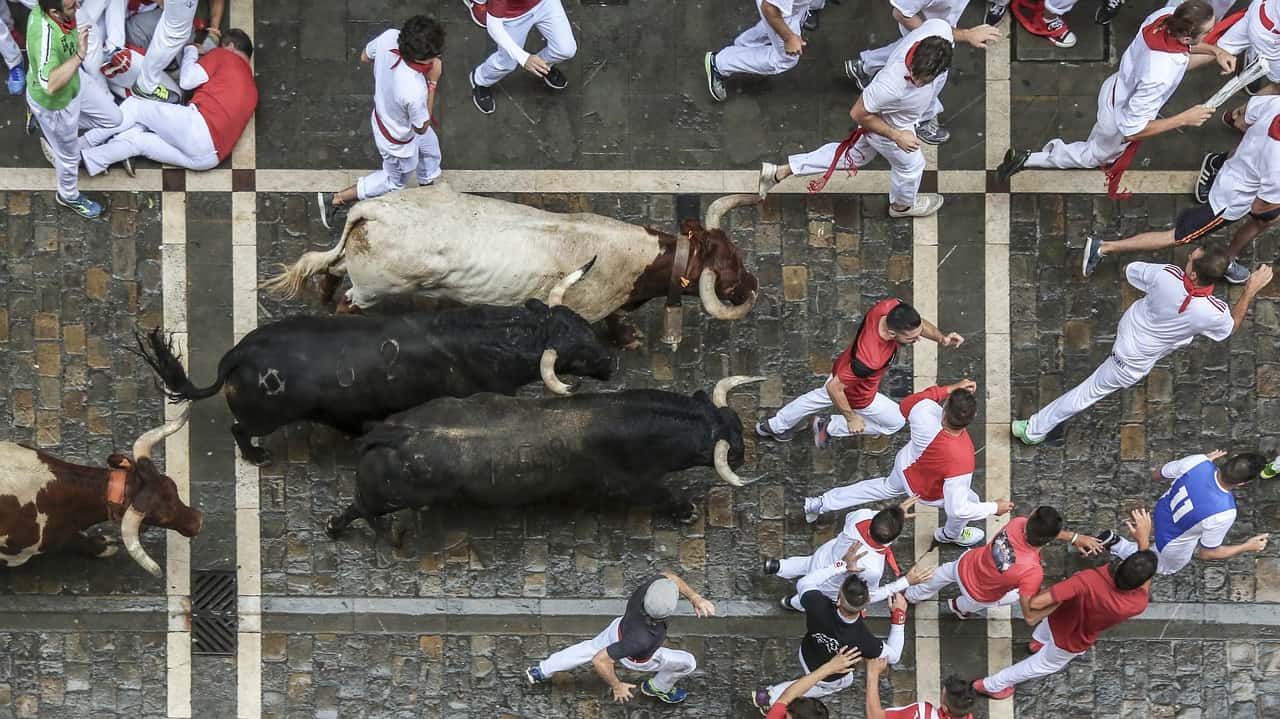
Go World Travel is reader-supported and may earn a commission from purchases made through links in this piece.
When Ernest Hemingway wrote “The Sun Also Rises” in 1926, he revealed a vibrant cultural spectacle to the world. Pamplona was never the same.
Propelled in part by the novel, the annual running of the bulls has become a global media spectacle.
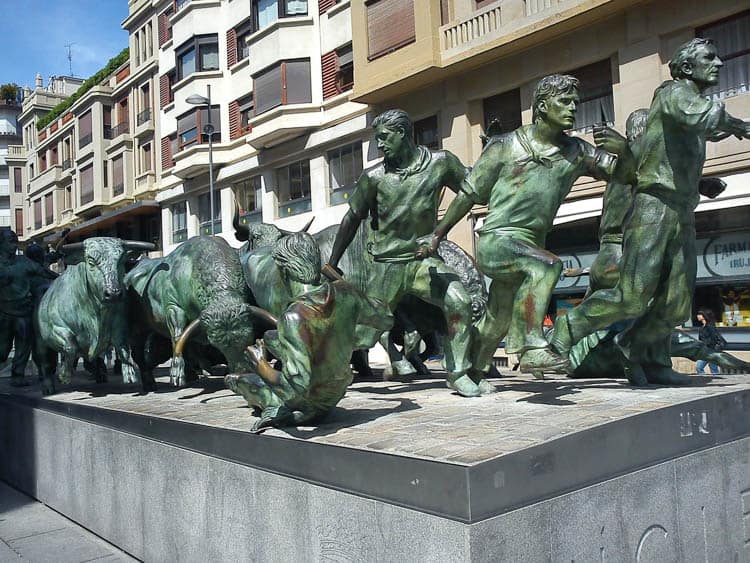
The Famous Running of the Bulls
Young men – and a few others – face death by running 903 yards (826 meters) through the cobblestone streets of Pamplona, Spain, chased by six bulls and nine steers and oxen.
The most well-known Running of the Bulls is part of the Festival de San Fermin. It’s a thrilling event, with local rivalries, blessings by priests, fireworks, and traditional folk clothing. Smaller “running of the bulls” events are held in other towns and countries. There is even a “running of the sheep” event held in New Zealand.
Unfortunately, the running of the bulls has become a victim of its popularity. The flavor of the event has changed. Now it is less of a cultural tradition and more of a global media spectacle. More than half of the 20,000 runners in 2014 weren’t Spanish. Furthermore, a visitor may have trouble seeing the event through a forest of television cameras.
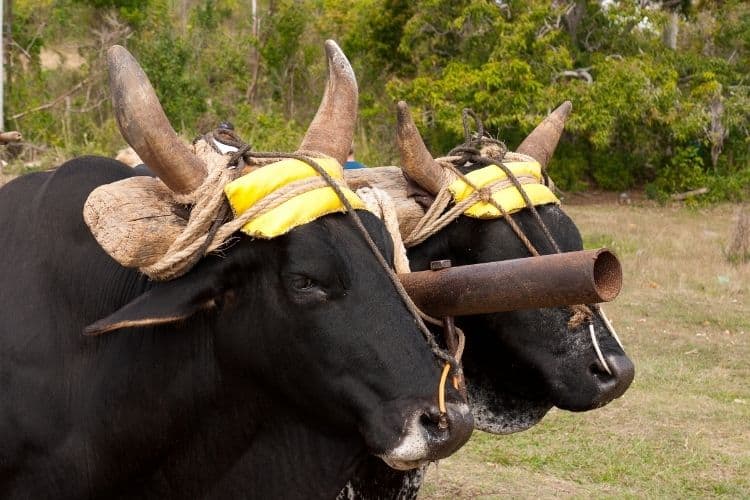
The Beginnings of a Different Basque Tradition
Less well-known is another Basque tradition called “la prueba de bueyes”, or the testing of the oxen. While some believe that the roots of the competitions are in rock quarries, most believe that they lie in rural farming.
Imagine a time, a thousand years ago, in the Basque Country of Northern Spain or Southern France. Two farmers glance at one-another over a stone fence as each uses a pair of oxen to clear a field of boulders.
“My oxen are stronger than your oxen,” one farmer calls over the fence.
“Not so”, responds the other. “Anyone can see that my oxen are stronger than yours. Where did you find those little babies? Are you sure that they are old enough to leave their mother? “
In short order, a competition would develop. The oxen that could more quickly move a rock a known distance was the winner. In time, these competitions became community events that are held during local festivals throughout the Basque Country of Spain and Southern France.
Unlike the running of the bulls, these events still retain their cultural flavor. Television cameras are noteworthy by their absence.
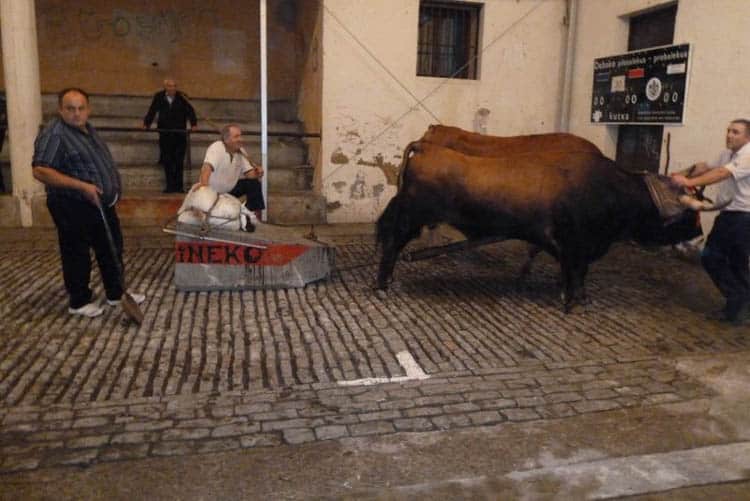
The Testing of the Oxen Competition
In the testing of the oxen, called “idi probak” in Basque, boulders or concrete blocks are hauled back and forth along cobblestone courses 22 to 28 meters (75 to 90 feet) long. Usually, a pair of gaily decorated oxen are used. The challenge is to pull the leading edge of the concrete block across a white line painted at one end of the course.
After twenty or thirty seconds rest, goaders, called “akuilutzaileak”, and one ox herder, called “itzaina”, push, pull, coax, and prod the oxen to turn around and haul the block back down the course to cross the white line at the other end.
Professional bookmakers take wagers on how many trips the oxen can make in a given period of time. This is usually half an hour. Side bets between friends are shouted across the arena. The Basque people love gambling, so large bets are common. The strongest oxen win prizes and a portion of admission ticket sales goes to local schools.
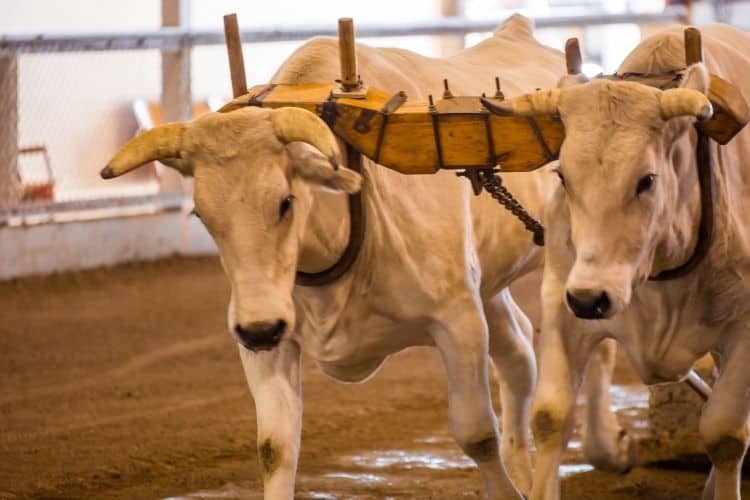
Weight Regulations for This Basque Tradition
The oxen usually weigh 500 to 650 kilograms (1,100 to 1,400 pounds). Although oxen as large as 1,450 kg (3,200 pounds) have competed. Larger oxen are handicapped by bags of sand placed on top of the stones. For each kilo that an ox weighs over the limit, a penalty weight of 1.5 kg (2.2 pounds) is added to the stone.
Although they vary from town-to-town, stone weights are usually around 1,100 kg (2,200 pounds). In the past, weights as great as 4,500 kg (9,000 pounds) were seen. Since oxen have disappeared from most farms, many of the animals are owned by companies that travel from town to town and are only used to compete. As many as 35 pairs of oxen may compete in larger towns.
Competitions take place in public arenas, courts and plazas, often covered by large tents in the winter. The oxen struggle for footholds, as the stones are often pulled across floors of rounded river rock or cobblestones.
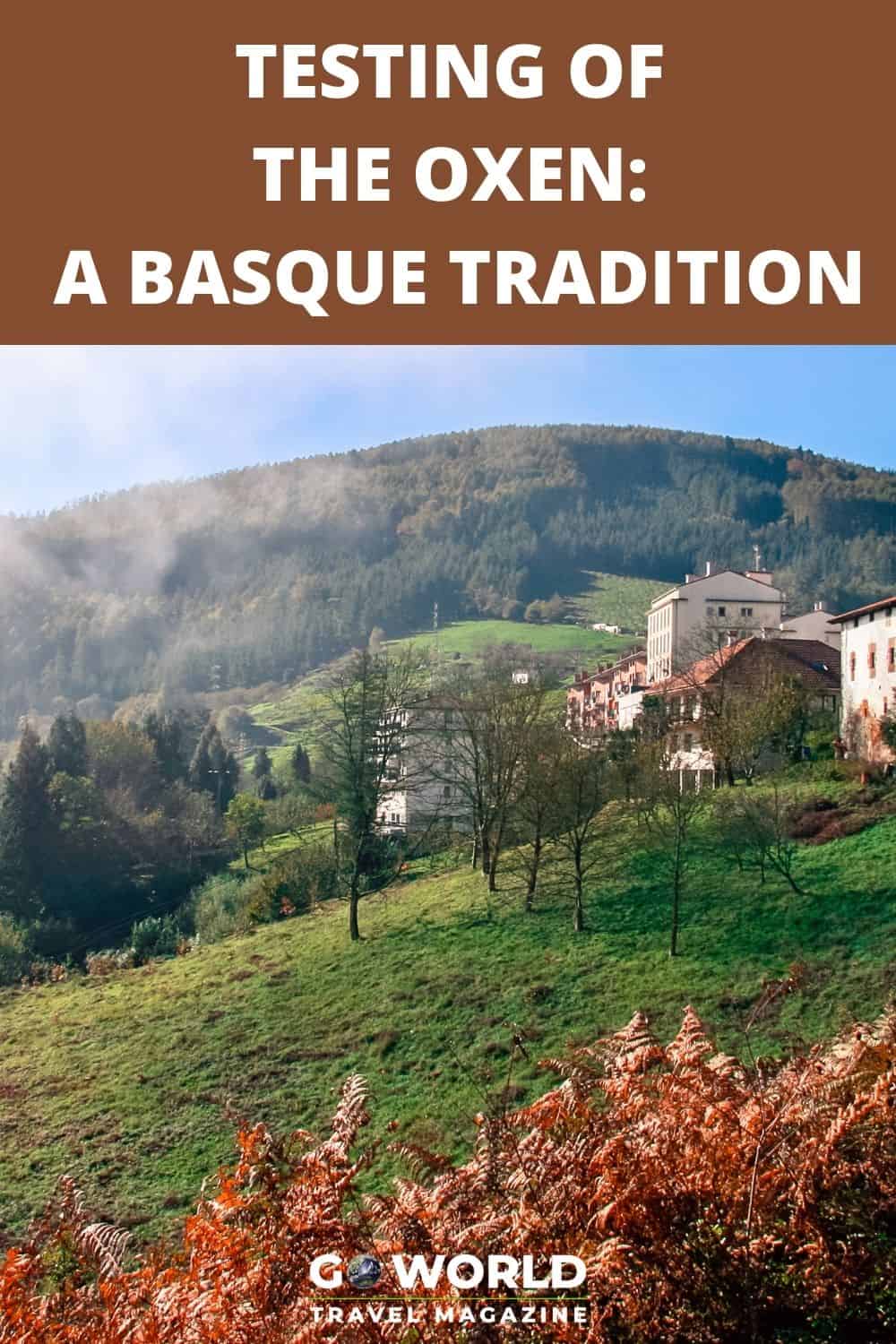
Work of the Goaders
The “goaders” work to keep the stone moving. If it stops, the oxen must work hard to restart it. Care must be taken to keep the stone within the white lines that mark each side of the course. If the stone goes over the line, it must be returned to where the fault took place.
Although the testing of the oxen lacks the blood and trauma of the running of the bulls (no one is injured), each competition provides a fascinating insight into the Basque tradition and culture. Most spectators are men, but women, children and babies are present. The crowd may range from a few dozen to hundreds.
The smell of sweating oxen fills the tents, even reaching the back rows of spectators who may stand on top of concrete risers to see better. Sweat runs off the oxen, which snort clouds of water vapor in the air.
Shouts in Basque (and less commonly in Spanish) and clouds of cigarette smoke fill the air. Refreshments are for sale, but beverages can also be brought in from nearby bars and restaurants.
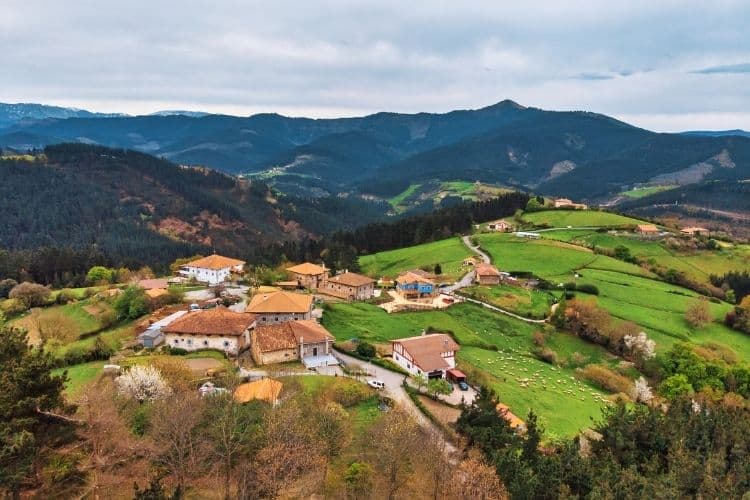
When and Where Does the Testing of the Oxen Take Place?
The testing of the oxen is seldom seen in large towns and finding such an event will take planning – or good luck. Most competitions are held off the beaten path, and foreigners are infrequent visitors. However, “la prueba de los bueyes” is falling in popularity and fewer events take place.
It is a victim of several factors. It is viewed as animal cruelty and fewer young people have become fans. Recently, animal doping has been in the news, and several oxen have died in the competitions.

Idi Probak usually takes place in the first few weeks of January, as part of the Three Kings holiday celebration. Because these are strictly local events, it may take some effort to find the schedules. But it’s worth it.
If you have the chance to see the testing of the bulls, you are fortunate, for you will have seen a part of the Basque tradition and culture seldom seen by foreigners. You won’t soon forget the almost overwhelming impact on your senses – sights, smells and the taste of local brews.
Count yourself lucky and congratulations for getting off the beaten path.
Author Bio: Bill Leslie is a freelance writer and forensic accountant. He writes about such diverse topics as WWII history, genealogy, business management, accounting, travel, and law. He lives in Sandy, Oregon.
- Top 10 Things to Do in Ireland - April 25, 2024
- How to Get Around in Sydney: A Local’s Guide to Traveling Around Sydney - April 24, 2024
- The Low-Key Magic of Ghent, Belgium - April 22, 2024
